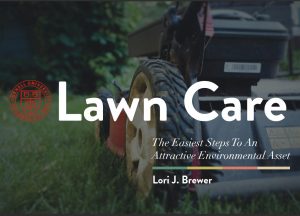I love any excuse to come to New York — when it’s not February. — K. A. Applegate
Ahh, February. The Monday of months. Yet even with a foot of snow on the ground over most of New York, you can take steps now for a healthy lawn.
First Step: Plan

To help with planning, the Cornell Turfgrass website has a section dedicated to home lawns and features Lawn Care: The Easiest Steps to an Attractive Environmental Asset, available as an ebook on iTunes and as a website. This resource includes information on basic and advanced care of lawns, how to renovate, choosing the right seed, dealing with salt (whether it comes from deicing products or your dog), and even tips on hiring a lawn care professional if that is your preference. Helpful videos are included.
Second Step: Get Your Mower Ready

The single most important lawn care practice you can undertake for a healthy lawn is proper mowing — and now is a great time to sharpen those mower blades. Why bother? Dull blades:
- shred rather than cut grass
- stress your lawn, making it more susceptible to insects, diseases, and drought
- increase fuel use by up to 20%
For DIYers, Lawn Care: The Easiest Steps to an Attractive Environmental Asset has a video on blade sharpening. Learning to do it yourself can also save money over time, as you should sharpen your blades multiple times throughout the growing season depending on the size of your lawn. The recommendation for a healthy lawn is to sharpen them after every 10-12 hours of use. (Want to reduce the amount of time you spend mowing? Raise your mowing height.)

If you need a new mower, consider purchasing a mulching mower which is designed to finely chop grass blades and tree leaves so they may slip between growing grass to soil surface. Grass blades are mostly water and nutrients, so leaving cut blades in place lowers fertilizer needs.
Overseeding
Last year’s drought left many poorly or non-irrigated lawns a little thin. Overseeding helps fill in the bare spots. You don’t even need to wait until spring. Dormant overseeding can help you get a head start on the season. Use the resources above to choose a drought-tolerant turfgrass type.
February is short, so take advantage of this time to prepare for your best lawn yet. Learn more at IPM for Landscapes, Parks & Golf Courses.